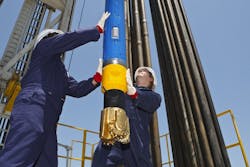As if the oil and gas industry weren’t struggling enough with low prices, it hasn’t been helped in the past week or so by an increasingly unsure U.S. presidential election and a deadly explosion at one of the largest pipeline systems in the U.S. But GE leadership is making it clear that it is all in still. And they are also showing that they understand how important it has become to combine domain expertise with its manufacturing and digital know-how.
In a merger announced this week, GE Oil & Gas will combine its manufacturing and digital platform with Baker Hughes’ oilfield service offerings and technology to create a new Baker Hughes. Both companies have invested in oil and gas even in the downturn, and have strong, complementary competitive scope across the industry. The combination will create the second largest player in the oilfield equipment and services industry, providing equipment, technology and services to the oil and gas industry with combined revenue of $32 billion and operations in more than 120 countries.
The transaction will be executed using a partnership structure, with GE Oil & Gas and Baker Hughes each contributing their operating assets to a newly formed partnership. GE will contribute $7.4 billion to fund a special dividend to existing Baker Hughes shareholders, who will own 37.5 percent of the new company. GE will have 62.5 percent ownership.
“Together, Baker Hughes and GE Oil & Gas will create an end-to-end provider of technology, equipment and services across the full spectrum of the oil and gas value chain: upstream, midstream and downstream. That is a truly unique combination,” said Martin Craighead, chairman and CEO for Baker Hughes, during a conference call to announce the merger. “In integrating Baker Hughes’ leading products and services with GE Oil & Gas’ suite of products and manufacturing capabilities, the new company will be able to take more new innovative products, solutions and services to market faster, more efficiently and more cost-effectively.”
Importantly, particularly in the current climate, the new company will be more resilient and cycle-resistant, according to Craighead, who will serve as vice chairman of the new company’s board of directors. “As an example, the efficiencies gained from integrating our R&D and manufacturing capabilities will allow the company to sustain and continue robust investment in innovation throughout every phase of the industry cycle,” he said.
Jeff Immelt, GE’s chairman and CEO, will be chairman of the new board. He pointed to the large investments GE has made in digital, including the development of Predix, GE’s operating platform for the Industrial Internet of Things (IIoT). The transaction accelerates GE’s capability to extend that digital framework to the oil and gas industry, he added.
“It has always been our belief that the oil and gas industry would be an early adopter of analytics,” Immelt said. “The combination of the Baker Hughes oilfield services platform with Predix will deliver superior outcomes, and we are well-positioned globally to execute for our customers.”
Lorenzo Simonelli, currently president and CEO of GE Oil & Gas, will take over as CEO of the new Baker Hughes. “The new Baker Hughes will be a truly full-stream company from resource extraction to transportation to end use, combining Baker Hughes’ deep industry expertise and history of technology development in oilfield services with GE Oil & Gas manufacturing and aftermarket service excellence strengthened by the unique capabilities of the GE Store,” he said.
As an example of the strengths the combined company can bring to the market, Simonelli referenced Baker Hughes’ AutoTrack technology, which has established new industry records by drilling 13,500 feet in one run in the Utica Shale. “Even with the success, both teams are confident that through GE technology we can add capabilities to make it even better by applying material sciences, 3D printing, data optimization, rotating equipment and sensing and measurement controls,” he said. “We expect to deliver an even better performance to drill faster, more efficiently and with better precision. This is just one example we feel together we will be able to provide the most advanced and efficient technology to the industry.”
In the current environment of prolonged depressed oil prices, customers are shifting to opex-driven investment decisions, Simonelli said. “Aging fields will require increased maintenance and intervention to sustain production as depletion occurs later in the well lifecycle and as operators look to extract more hydrocarbons from existing assets as opposed to developing new fields,” he said. “Our customers will benefit from our expanded offering, new integrated solutions and the introduction of new business models like the industry’s first contractual service agreement we signed earlier this year for blowout preventers with Diamond Offshore.”
Although the market has been a difficult one, GE expects short-term growth in the North American unconventional oil and gas markets and in liquid natural gas (LNG), Immelt said, adding that they’re expecting a slow recovery overall—the price per barrel staying at $45 to $60 through 2019.
“Every business in GE has gone through cycles. We’ve developed a keen eye for what changes through each cycle and position for growth when others pull back. This has helped us gain share in aviation, power and healthcare over time,” Immelt said. “In the case of oil and gas, we see tremendous opportunity for customer productivity through innovative technology, digital solutions and financial efficiency, and here we can lead. This is the right time in the cycle to invest.”
Companies in this Article
Leaders relevant to this article:

